Date
of publishing: 11th January 2006
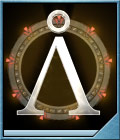 Jason Morris is the lead artist on the video game Stargate
SG-1: The Alliance. Since the recent events between
Jowood (the publisher) and Perception (the developper), no
big news have come to us. So, we came to them. In collaboration
with Stargate-Game.com,
we asked Jason Morris to give us some new information on the
work he is doing at Perception.
Jason Morris is the lead artist on the video game Stargate
SG-1: The Alliance. Since the recent events between
Jowood (the publisher) and Perception (the developper), no
big news have come to us. So, we came to them. In collaboration
with Stargate-Game.com,
we asked Jason Morris to give us some new information on the
work he is doing at Perception.
Update 21 January 2006:
We are sorry to announce that the game has just been cancelled.
We support all the team at Perception on this sad day.
Gilles Nuytens:
First thank you for allowing us to ask you some questions!
How did you came into the design of video games? What is your
professional background and studies?
Jason Morris: Hi, no problem :). I
suppose I came into design of video games as an interest at
a fairly young age, around 12 when after playing too many
video games and sketching too many weird characters, my brother
and I went out and bought a book for our commodore 64 full
of the raw code for a bunch of games so we could make our
own. We sat down and typed out hundreds of pages of code for
a game called "Terra Cognita". Many years after
that I was doing more painting and sketching with comic ideas
etc, I then got into level design with Unreal, and then more
heavily with Half-Life using the worldcraft editor making
multiplayer maps, models and skins for characters. I then
moved to doing work on Mods for Unreal Tournament and Half-Life
working on Player Characters, Level Building, Music and SoundFX,
all this gave me some great opportunities for learning and
improving. At school I studied Art and Film.
Next was working as a fulltime texture artist on the MMOG
Citizen Zero for Micro Forte and Published by Microsoft, working
on environments, characters, weapons and vehicles, after around
8 months I was promoted to Lead Artist for the game and continued
work on the title for around another year and a half, touching
on all aspects of the game in terms of art. After this I joined
Perception as Lead Artist and have been working on Stargate
to the current day.
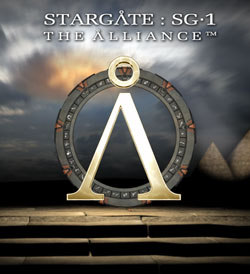 Gilles
Nuytens: You are the lead
artist on "Stargate SG-1: The Alliance", Can you
describe the work you are doing? Gilles
Nuytens: You are the lead
artist on "Stargate SG-1: The Alliance", Can you
describe the work you are doing?
Jason Morris: The best way that
I can sum this up in terms of the artwork for the game is
that I always wanted the style of the artwork in the game
to be as close as possible to the show itself, so this meant
using a more photorealistic look for everything, as compared
to where some games would develop and use a very stylised
look for the settings/characters and so on. This helps the
artists to take direct reference from the scenes we see
in the show where possible and translate them to the video
game with little trouble. We basicaly wanted to capture
the show in the form of a videogame. I think in terms of
the artwork we have really managed to do this very well,
right down to some very minor details that we know the fans
would want to see / string us up for getting wrong :).
In terms of the day to day work we are doing, it involves
the art team working on mission based environments including
interior and exteriors, weapons, vehicles, special effects,
animation and characters for all three platforms at the
same time (PC, Xbox and PS2), so that in some cases the
artists may reproduce the same asset with alot of variation
in technical specification up to three times. We are working
on the artwork in stages of polish and are currently approaching
a stage where we will begin to finalise lighting and particle
effects for the environments.
Gilles Nuytens: Can
you describe the different steps from the sketch drawings
of a ship/environment to the final model used in the game?
Jason Morris: Early on in the project
we have a few different ways of looking at things as we
have some missions that were direct settings that allready
exist in the show, and we had others that were completely
new and original settings that should still "fit"
with the Stargate setting. Missions were approached differently
due to this in each case.
For some missions that were more of our original creation,
our concept artist would discuss ideas, we would sit down
and collect "idea" reference images from all over,
based on what the function and gameplay of the mission was...
and he would then sketch these ideas into existance. The
artists and level designers would then take these images
as reference to begin work. On the majority of missions
however we would use direct reference that we had from set
blueprints from the show etc etc.
Gilles Nuytens: Can
you describe the process of getting the actors faces into
digital format?
Jason Morris: Using a very advanced
new method we mailed each of the actors a small tub of butter
along with some flour, we asked them to them smear the butter
all over their face the lightly dust themselves with the
flour, wait for 40 minutes then peel off and mail back to
us, that was just for fun :)
Then the actors were all put into a digital scanning device
and scanned for their facial features and skin texture etc.
This was all sent to us and we began reconstructing them
for the game placing them on the lower body sections that
we had allready created.
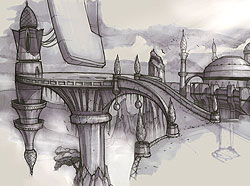 Gilles
Nuytens: Did the poly
count have to be lowered in order to make the faces viable
for a game, while still being recognisable? Can you say
what the poly count for an average character is? Gilles
Nuytens: Did the poly
count have to be lowered in order to make the faces viable
for a game, while still being recognisable? Can you say
what the poly count for an average character is?
Jason Morris: The original digital
facial scans were a little too highpolygon for use directly
in the game, mainly for the playstation version that required
a tighter budget in terms of facial bones and polygons.
After getting the digital scans we began to lower the polycount
slightly for the specifications of each platform and to
work as best as possible with the requirements for facial
animation. It is interesting that the main features that
seem to give a character it's true to life form ingame come
more from the texture that is "wrapped" around
the face than the amount of polygons overall, so with this
in mind we were able to replicate the characters no matter
what the polygon range. We will be working on the final
look for the main characters right up until the last minute,
including different outfits such as the desert uniform and
so on, as they are the real heart of the game. The average
polycount for our characters is between 2500 to 3500 polygons.
Gilles Nuytens: How
much creative license were you able to take with the design
of in-game environments and characters?
Jason Morris: For environments and
characters that are directly from the show we took very
little if any creative licence, we started with a mission
to replicate the show exactly. There are however areas where
we felt some repetition of the same style needed some blending
of new ideas based on the same theme just to give the players
and fans some interesting variations on the stargate settings
they know so well. One of these includes a slightly industrial
looking jaffa styled base on a distant planet. We have created
over 16 unique sets of environment assets that work very
well on their own but could also easily fit together to
create some very interesting combinations. I can't wait
for the game to be released to see what artists and level
designers do with these combinations of assets, I can imagine
pyramids set in the snow, high tech forest bases etc, it
will be very interesting.
For the environenments that were unique to the game, we
used the established style for the game and implemented
our own creativity to create some interesting settings that
I think still fit well within the stargate universe.
Gilles Nuytens: What
is your favourite map - from an artistic point of view?
Jason Morris: It is hard to choose,
I think with all the very talented artists I work with,
each of whom have their own missions to complete, they all
have their own great sections, so from an artistic point
of view my favourite map is a mission based in a traditional
Egyptian style (mission 07), mainly because I love the theme
and it gives us so many cool options to work with. It is
set on a desert planet in the middle of a large dust storm
with underground tombs etc, it's great to work on.
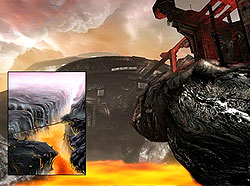 Gilles
Nuytens: What was the
biggest challenge you came across for designing characters,
scenes etc, in terms of game playability while still maintaining
the SG-1 look and feel? Gilles
Nuytens: What was the
biggest challenge you came across for designing characters,
scenes etc, in terms of game playability while still maintaining
the SG-1 look and feel?
Jason Morris: The biggest challenge
overall has been managing multiple versions of assets, with
three different sets of rules they must adhere to, across
three different platforms at the same time. We are basically
making three games at once in terms of art assets, so this
was at first a challenge when creating a system for file
structures and so on, then once we were into full production
maintaining all of these standards to not only have the
highest quality of artwork across all platforms but to also
fit in with some of the more decorative style of art contained
in the show. A good example of this is the Tel'Tak ship,
as it has almost completely rounded shapes all over, this
means more polygons are needed to create this form, so we
simply need to balance this against other items in the particular
mission as best as possible to still keep the unique SG-1
look and feel.
Gilles Nuytens: Who
is your favoured character/scene/vessel in the game - artistically
speaking?
Jason Morris: At the moment my favourite
scene is contained in the mission where you first meet the
Haaken on a very lush an mysterious planet formerly inhabited
by the Extrenites, it has a great feel. My favourite character
is Thor because he just looks pretty funny running around
with a huge gun in multiplayer.
Gilles Nuytens: Did
the recent events with Jowood had some impact on your work?
How do you feel about that?
Jason Morris: The recent events
with JoWood had no real impact on our day to day work as
it was pretty much business as usual. The one thing that
did have a small impact on the great group of programmers,
level designers, artists, animators, sound guys and testers
within the company were some of the untrue statements JoWood
had made in the press. Within the company and in terms of
the game itself we all thought it was quite funny, because
we knew they were untrue, but it is hard to read things
like this about something you are close to on a daily basis.
It all seems like a long time ago now.. and we have been
pressing ahead without any change at all really.
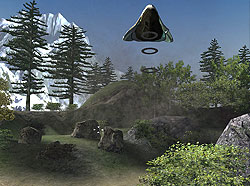 Gilles
Nuytens: When you build
the ships/weapons and other items that already existed in
the TV show, what kind of help did you receive from MGM,
did you receive maps, sketches, drawings, models, etc. from
them to make the game closer to the show? If not, what did
you do to get the look of the game as close as possible
to the show? Gilles
Nuytens: When you build
the ships/weapons and other items that already existed in
the TV show, what kind of help did you receive from MGM,
did you receive maps, sketches, drawings, models, etc. from
them to make the game closer to the show? If not, what did
you do to get the look of the game as close as possible
to the show?
Jason Morris: We have a mountain
of blueprints and set designs from almost every season of
the show directly from MGM. These include exact measurements
and we use them to create items that exists in the show,
they have been invaluable. We have photographs from the
set, costumes etc. We have all of the episodes on DVD and
use them to recreate certain scenes and effects for weapons
and particles. Basically we have so much reference and with
the amount we have studied, we have found that even similar
sets vary within the show itself from season to season that
we have been able to replicate areas from the show as close
as we feel is possible due to the slight changes in sets
from each season. In many cases we have recreated exact
consoles shown on computer screens and so on based on still
images from a certain episode.
Gilles Nuytens: If
you designed the Haakens, what was your inspiration to create
them? Or if you didn't do it yourself, what was asked/required
to be included into the charachter?
Jason Morris: The Haaken were designed
based on what was called for them to behave/look like in
the script for the game. They needed to be scary, fast and
intelligent looking, and that is something that is not an
easy combination to visualise. There were quite a few people
involved in the design of the look for the haaken as well
as their ships and interior spaces, from the producer to
CEO as well as myself and the concept artists as well as
environment artists. The main character concepts came from
many versions of the character design from our character
concept artist, she would collect reference ideas and then
begin to sketch up her own ideas and present them, gradually
she refined to add the more and more "intelligent"
aspects of the character and then finalised over a period
of around two months. There are still some earlier versions
of these character ideas that I really like and would like
to see them also included in any future addition to this
game if it is possible.
Gilles Nuytens: What
do the extrenites look like?
Jason Morris: They are short and
not very good at fighting :) ... thats about all I can say
about them.
Gilles Nuytens: Thank
you very much for your time!
Jason Morris: Thankyou, I hope the
stargate fans will enjoy the world we have created.
|